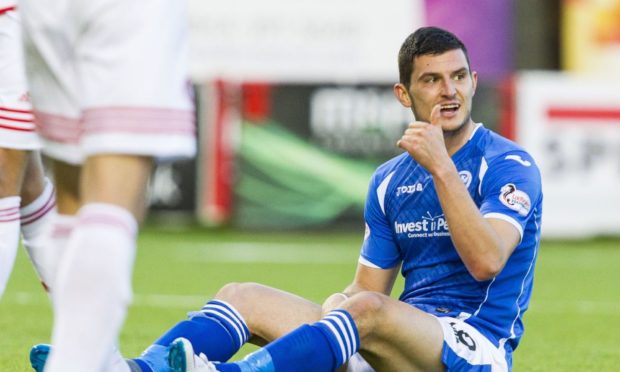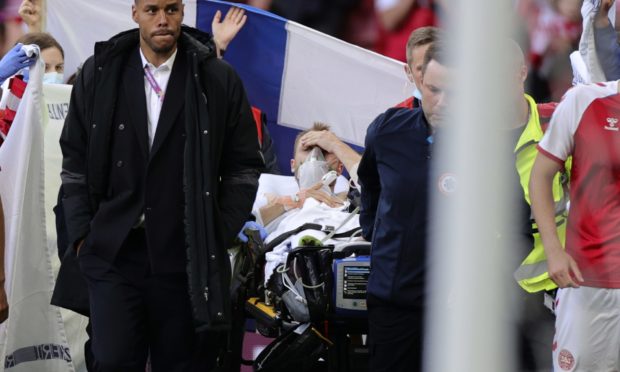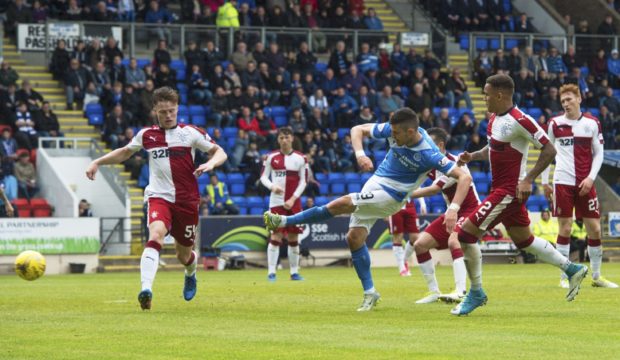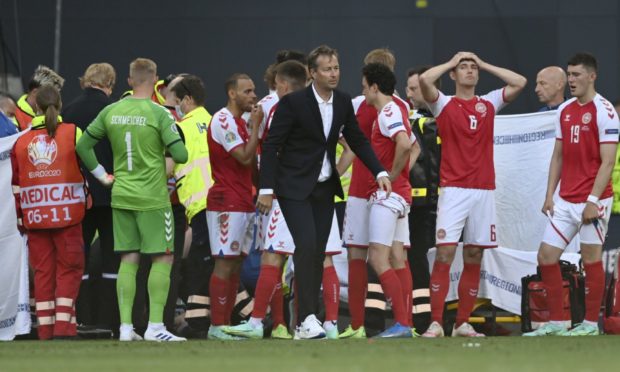Graham Cummins has revealed he suffered a heart scare during his time at St Johnstone and was prevented from training by club medics.
After seeing Denmark’s Christian Eriksen suffer a cardiac arrest on the pitch at Euro 2020 last week, Cummings recalled his own shock during his days at McDiarmid Park.
Though he admits it was “nothing compared to what has happened to Eriksen”, the episode led him to question whether it was safe for him to continue playing at all.
And the 33-year-old insists had his problem been as critical as the Inter Milan midfielder’s, he wouldn’t be stepping back onto a football field again.
Now retired, Cummins signed for Saints in the summer of May 2015 and played 90 times over three seasons, scoring 15 goals.
The striker’s heart was shown to have been beating at 150% of its highest safe level for 10 minutes during a training session.
He carried on at the time but, returning to the club the following day, was taken for scans and prevented from training until getting the all clear.
‘My heart was beating irregular’
Writing for EchoLive in his homeland, the Irishman recalled: “I, myself, suffered a scare during my playing days with St Johnstone.
“We would always wear a heart monitor during training, but the results, what our heart rate was during the session, would only be collected after.
“I made it known that my heart was beating irregular but was allowed to continue.
“I didn’t drop out of training, because I was thinking if I did and nothing was wrong, how bad would that make me look?
“When I went into training the next day, I was told me I wouldn’t be allowed to train again until I saw a cardiac specialist because the results from my heart monitor had shown that my heart spent 10 minutes beating at 150 percent of its highest level.
“I saw the specialist, who ran several tests, and fortunately, nothing appeared from the results, but it did give me a fright.
“It did make me doubt whether continuing to play on was safe even though I had been given the all-clear.
“My incident was nothing compared to what has happened to Eriksen and although he might make a full recovery, if I were him, I wouldn’t be stepping foot on a pitch again.”
‘What if it happened at an amateur game?’
Eriksen survived thanks to the quick thinking of team-mate Simon Kjaer among others before he was revived by paramedics and medical staff on the pitch in Copenhagen.
Cummins says the horrific episode will concern players at all levels, professional or amateur.
He added: “Players will begin to wonder is enough being done to keep them safe and that doesn’t apply to just professional footballers.
“That relates to anyone involved in any sort of sport organisation. Thankfully for Eriksen, there were trained medics and the equipment at the game to safe him but what would happen in an amateur game?
“Would there be a defibrillator at the side of the pitch to save that person’s life? Would there be medics at the games?
“Do the players or coaches know first aid? We saw how important the actions – CPR – taken by Eriksen’s teammate Simon Kjaer were to save the Inter Milan player’s life.
“Amateur clubs aren’t going to have the safety equipment at games. There aren’t going to be medics on the sideline in case something were to go wrong on the pitch.
Defibrillators should be mandatory
“So, what can be done? Defibrillators need to become mandatory.
“It’s not unrealistic for every player to have some knowledge of first aid, but it would be difficult to do.
“It’s tough enough getting 22 players to turn up for a match never mind a course.
“However, the management staff of the team should be qualified in first aid.
“These are just little steps that can be done to ensure the safety of everyone involved in sport, because if what has happened to Eriksen has taught us, is that, that cardiac arrest can happen to anyone at anytime no matter how fit a person seems.”



